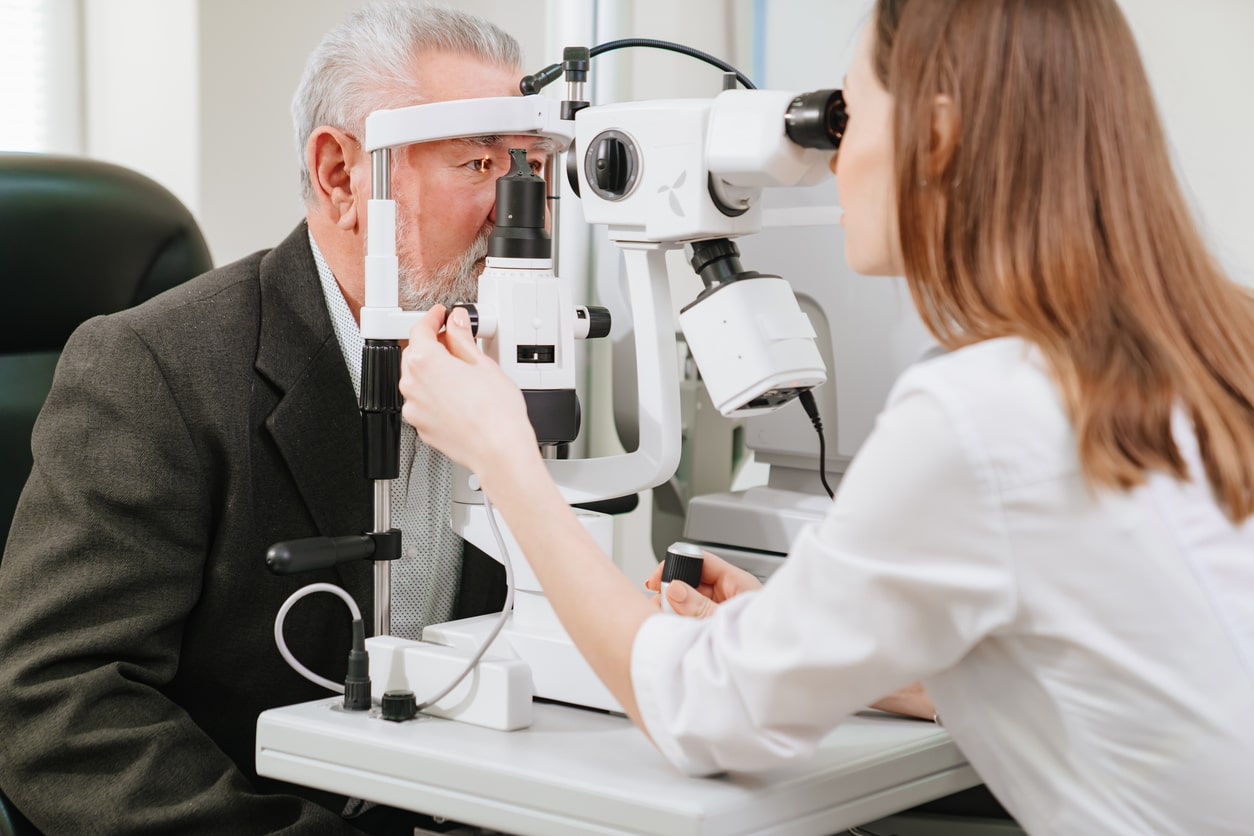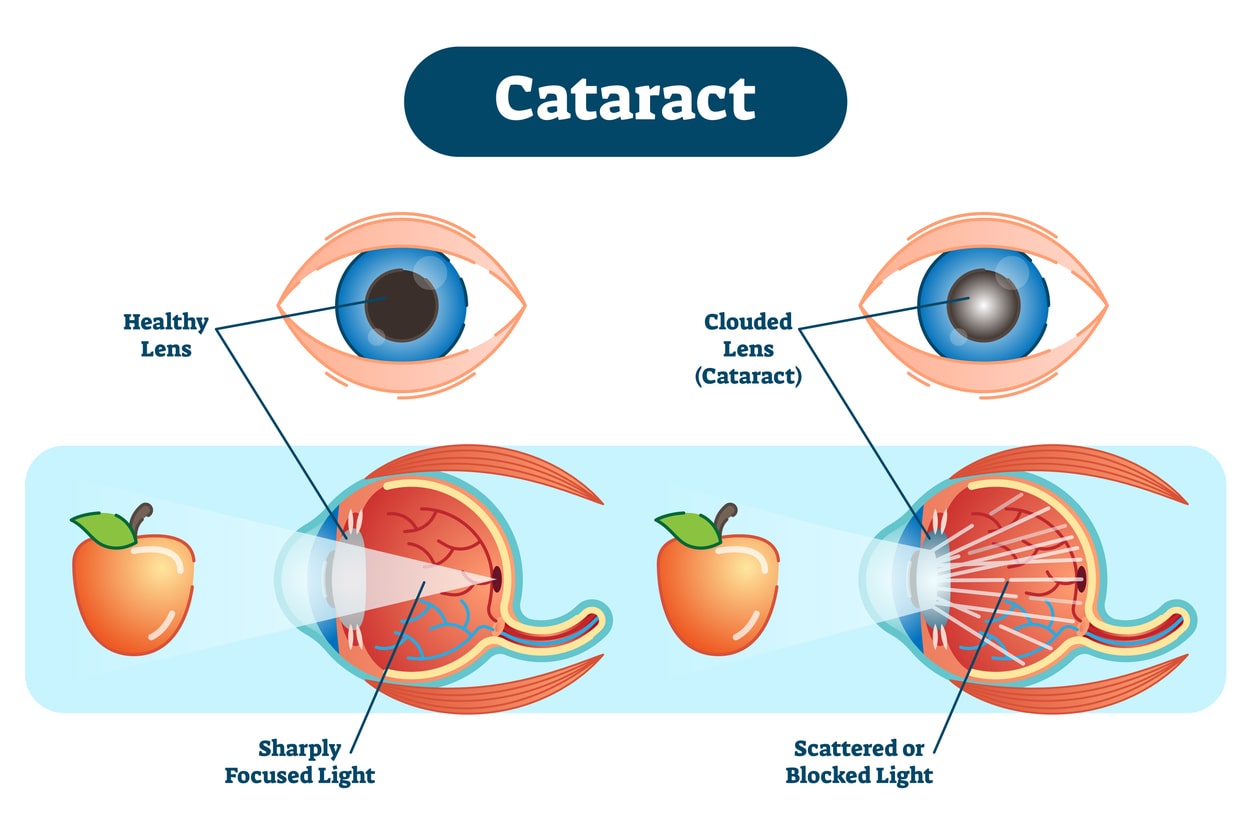Cataract Awareness Month shines a spotlight on a condition that impacts millions worldwide. As we observe this important month, it’s crucial to understand the significance of cataracts beyond just being an issue for the elderly. Contrary to common belief, cataracts can affect individuals of all ages, from newborns to young adults. Early detection and intervention are paramount in managing cataracts effectively and preserving vision.
In honor of Cataract Awareness Month this June, we urge you to participate in proactive efforts to improve eye health. Stay informed as we highlight five essential facts everyone should know.
Cataract Awareness Month: 5 Facts You Need to Know
-
Cataracts: Not Just an Elderly Concern
Cataracts are commonly perceived as an issue primarily affecting the elderly, yet they can impact individuals at any age, including newborns and young adults. This broad age range of susceptibility underscores the importance of understanding cataracts as a widespread concern that requires awareness from all age groups.
- Congenital Cataracts: Babies can be born with cataracts as a result of inherited genetic disorders, maternal infections during pregnancy, or metabolic issues. Early diagnosis and treatment are crucial to prevent long-term visual impairment.
- Development During Young Adulthood: Young adults might experience cataracts due to trauma, excessive exposure to ultraviolet light, or the use of certain medications. Protecting eyes from excessive sunlight and avoiding smoking are preventive measures that can help maintain lens clarity.
It’s important to recognize that cataracts can affect individuals of all ages, including newborns, young adults, and the elderly. This broader spectrum of susceptibility emphasizes the importance of raising awareness about cataracts across all age groups.
-
Lifestyle Factors Can Increase Cataract Risk
Understanding the impact of lifestyle on cataract development is crucial for prevention. Here are five key lifestyle factors that can significantly influence the risk and progression of cataracts:
- Sunlight Exposure: Prolonged exposure to ultraviolet (UV) light can damage the proteins in the eye lens. Wearing sunglasses that block 99% to 100% of UVA and UVB rays is an effective preventive measure.
- Smoking: Tobacco smoke introduces oxidative stress and toxins that can deteriorate the lens of the eye. It’s advisable to stop smoking to lower the likelihood of developing cataracts and to enhance general eye health.
- Dietary Choices: A diet lacking in antioxidants and high in sugar or highly processed foods can increase cataract risk. Incorporating foods rich in vitamins C and E, such as citrus fruits, leafy greens, and berries, supports eye health and can delay cataract progression.
- Health Conditions: Diabetes and other conditions that affect metabolic balance can accelerate cataract formation. Managing these conditions through medication and lifestyle changes is critical for eye health.
- Steroid Use: Long-term use of corticosteroid medications has been linked to increased cataract risk. If steroids are necessary for other health conditions, regular eye examinations can help catch and manage cataract development early on.
These preventative measures can significantly reduce the risk of cataracts and promote long-term eye health.
-
Cataract Surgery Can Restore Vision
Cataract surgery is the primary treatment for cataracts, and significant advancements in technology and surgical techniques have made it a remarkably effective procedure. The procedure typically involves the removal of the cloudy lens, known as the cataract, and replacing it with an artificial lens called an intraocular lens (IOL). Patients have a variety of IOL options to choose from, including monofocal IOLs designed to restore distance vision, as well as multifocal and toric lenses, which help correct presbyopia and astigmatism. This customization allows individuals to achieve a greater degree of vision correction, potentially reducing the need for eyeglasses or contact lenses post-surgery.
-
Cataracts: Various Effects on Vision
Cataracts can manifest in diverse ways, impacting one’s vision. Consider the following effects:
- Blurred Vision: Cataracts cause the eye’s lens to become cloudy, resulting in blurred or fuzzy vision. This can make it difficult to see objects clearly, especially fine details or objects at a distance.
- Diminished Color Perception: As cataracts progress, they can impact color perception, leading to a dulling or yellowing of colors. Colors may appear less vibrant or distinct, making it difficult to appreciate and identify different hues.
- Increased Sensitivity to Glare: Cataracts can cause increased sensitivity to glare from bright lights, such as sunlight or headlights at night. Glare may appear as halos or starbursts around light sources, which can be particularly bothersome and affect activities like driving.
- Difficulty with Night Vision: Many individuals with cataracts have trouble seeing in low-light conditions, such as at dusk or nighttime. This can make nighttime activities, such as driving or navigating in dimly lit environments, more challenging and potentially hazardous.
- Impact on Daily Activities: The visual symptoms associated with cataracts can significantly impact daily activities and quality of life. Tasks that require clear vision, such as reading, driving, watching television, or recognizing faces, may become more difficult or frustrating to perform.
-
Early Intervention For Cataracts Can Preserve Vision
Regular eye exams and early detection are pivotal in managing cataracts and preserving vision. These exams, conducted by optometrists or ophthalmologists, are essential for detecting cataracts in their early stages when treatment interventions may be most effective. By identifying cataracts early, you can monitor their progression and implement appropriate management strategies to prevent further vision deterioration.

While early detection cannot prevent cataracts entirely, it allows individuals to make informed decisions about their eye health and treatment options, empowering you to take proactive steps to maintain clear vision and quality of life. Screening for cataracts is particularly crucial for individuals at higher risk due to age, family history, or certain medical conditions. Through routine screening and early detection efforts, we can ensure timely interventions and optimize visual outcomes for those affected by cataracts.
Contact Us for Treatment this Cataract Awareness Month
With June being Cataract Awareness Month, there’s no better time to prioritize your eye health. Cataracts affect individuals of all ages, and early detection is key to managing this condition effectively.
At Florida Eye, we are dedicated to promoting eye health and raising awareness about cataracts. Our team of experienced ophthalmologists and optometrists is committed to providing top-notch care and personalized treatment plans tailored to your unique needs. By staying proactive about your eye health and scheduling regular exams, you can ensure early detection of cataracts and other vision-related issues, allowing for timely intervention and preserving your vision for years to come. Don’t wait until your vision is compromised – take charge of your eye health today with Florida Eye and let us help you see a brighter future ahead.




